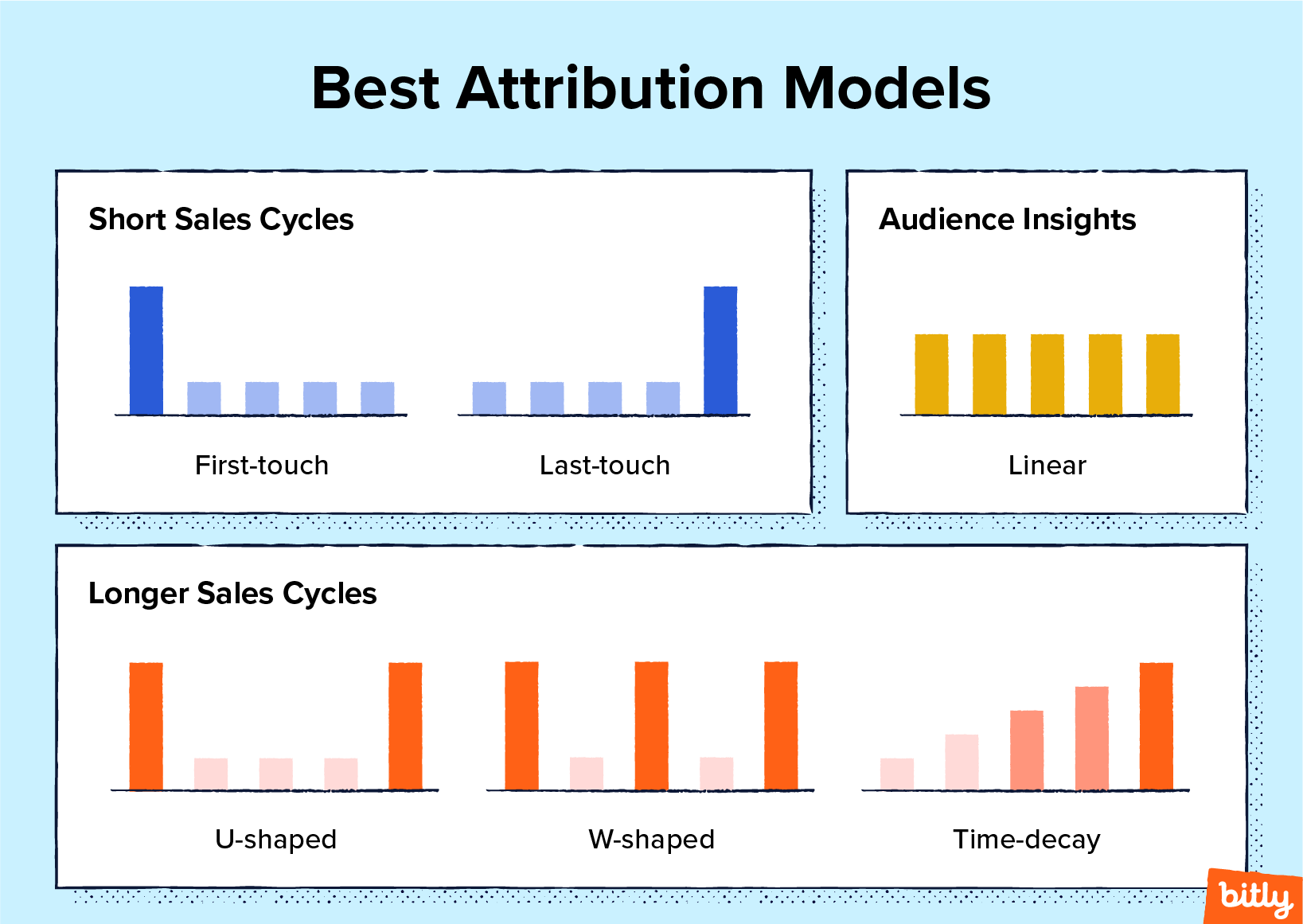
How does your business make a sale?
Facebook ads? Google Ads pointing to an ecommerce storefront? Billboards? Traveling salesperson? Carrier pigeon?
If you’re like most small businesses, your answer is “all of the above”—except maybe not carrier pigeon.
While it certainly depends on what you’re selling, the average sale requires eight touchpoints. So how do you determine which of those touchpoints gets the credit for the sale?
When it comes to digital marketing for small businesses, that’s exactly what marketing attribution attempts to answer. Marketing attribution helps businesses determine how much credit each customer touchpoint should get for a sale. It’s equal parts art and science, and its conclusions often influence where a brand spends its marketing budget.
So let’s dive right in and explore how marketing attribution modeling works.
What is attribution modeling?
Marketing attribution modeling is the process of determining how various marketing tactics contributed toward a specific goal, like product sales or other types of conversions.
Everybody knows that marketing helps boost sales. But it’s usually not all that clear how much a specific piece of marketing boosts sales. And that’s a problem, because if you don’t know how effective your various marketing strategies are, you don’t know where to focus and where to cut.
There are several different attribution models you can use to measure your marketing efforts, and they’re all based on touchpoints. In most digital marketing contexts, brands have multiple touchpoints along the customer journey.
Often, it doesn’t make sense to point to a single marketing touchpoint as completely responsible for the sale. So attribution modeling gives marketers a way to estimate how much influence various touchpoints have.
Marketing attribution models to know

There are quite a few marketing attribution models an organization can use. The trick is picking the right one—the one that prioritizes the right metrics and tells the right story. We’ll get back to this later on, but first, let’s look at which models are right for each situation or purpose.
Best for short sales cycles
Some attribution models work better when the sales cycle is short. If your price point is low, your product isn’t particularly complicated, or it’s an everyday consumable type of product, then chances are you’re on a short sales cycle.
- First-touch attribution model: The first touchpoint (usually the first click) gets 100% of the attribution.
- Last-touch attribution model: The last touchpoint prior to the sale/conversion gets 100% of the attribution.
If your business has a shorter conversion path, then you need quick, uncomplicated insights. You may only have one or two touchpoints in the whole customer journey, so it doesn’t make sense to use a model that relies on multiple touchpoints.
In addition, you’re likely more concerned with where customers learned about your product than what convinced them to buy. So first-touch and last-click attribution models work well here.
Best for longer sales cycles
If your business has a longer sales cycle, then single-touchpoint models won’t give you much valuable information. You’ll want to use one of several multi-touch attribution models.
- U-shaped attribution model: The first and last points of contact get most of the attribution (40% apiece), while any in-between points split the remaining 20%.
- W-shaped attribution model: The first, middle, and last points get 25% or 30% each, depending on the specific W-shaped model you use. Any in-between points split the remaining 10% or 25%.
- Time-decay attribution model: The most recent interaction gets the most weight. The older the interaction, the less weight it gets. This model works well for products that require a lot of preliminary research and comparing options, but it can be complicated to implement.
The goal here is to capture the impact of your marketing activities across an extended sales cycle. The social post, the blog post ranking via organic search, the email opt-in, the LinkedIn message, and the 1:1 sales meeting all mattered. The question is figuring out how much weight to give each.
Best for audience insights
Some attribution models provide more valuable insights into customer behavior and preferences, which is especially helpful in determining how customers interact with your brand.
- Linear attribution model: Every point of contact (across all channels) gets an equal share of the attribution.
When every touchpoint receives equal weight, it doesn’t tell you much about what convinced your customer to buy. However, it does give you useful data on where your audience is seeing and interacting with your brand, so you can meet your customers where they are.
Selecting the marketing attribution model that works
The biggest difficulty in attribution modeling isn’t understanding the models. It’s choosing the model that makes the most sense for what you’re trying to accomplish.
Choosing the right marketing attribution model starts with evaluating your business needs and marketing goals. Use these strategies to determine which model makes sense for you in each context.
Define business goals
First, define your business goals relating to marketing attribution. Do you need to understand something specific about your customer? Are you making budget determinations? Are you seeking a specific outcome, like a 10% increase in conversions or a higher click-through rate?
Choosing the right marketing attribution model starts here because each model will reveal different data points. Choose the wrong model, and you might end up with the wrong conclusion.
Understand the customer journey
Next up, make sure you clearly understand the customer journey before deciding on a model. Several models (like the U- and W-shaped models) require you to have several key touchpoints. So you need to identify what those key interactions are before you can figure out which attribution model fits your customer journey.
Gather data on historical performance
Unless your business started last week, this isn’t your first marketing campaign. And that’s a good thing because it means you have plenty of historical performance data to draw from.
For example, you likely already know your average conversion rate at various points in your funnel. You might even have survey data from customers post-sale that gives more insight.
Data-driven decision-making is key here. If your marketing team is arguing about which touchpoints are the right ones to measure (or how much weight they should have), settle the argument using data, not personality or seniority.
Once you know which touchpoints were crucial in previous iterations of the buyer journey, you’ll have a strong indication of which ones will be this time.
Consider the budget
Don’t forget about your budget constraints. Multi-point attribution models require more time and effort to track, which means they’ll cost more. In contrast, single-point models are much less demanding options.
Align with sales cycle length
As we mentioned earlier, sales cycle length plays a big role in determining the right attribution model. If your typical sales cycle is “see social media ad, click, add to cart, buy,” then there aren’t enough touchpoints to even consider a W-shaped model.
Conversely, if your sales cycle runs an average of six months from the first point of contact to the signed contract, you might have over a dozen touchpoints of varying value. Choosing an attribution model that collects enough data (and weights it accurately) is key to making smarter marketing decisions.
Stay flexible (and adapt as needed)
Next, stay flexible and keep an open mind. There is no single attribution model that is 100% accurate in every situation. The market will change. Your data analysis needs will change. Your sales cycle might even change.
So as you see changing dynamics in the market or in your own business, stay flexible in your marketing attribution approach. It’s smart to regularly reassess and refine your chosen attribution model.
Optimize marketing success: Bitly’s role in marketing attribution
As you continue refining and optimizing your marketing attribution approach, consider adding Bitly to your marketing software toolkit.
You might think of Bitly as a link shortener, but behind the scenes, it delivers so much more in terms of tracking and analytics. Bitly can help your business with numerous aspects of marketing attribution, including:
- Link tracking: Helps you attribute traffic to various marketing channels
- Data analytics: Gives you real-time insights on link clicks and user engagement
- Multi-channel attribution and UTM parameters: Facilitates more accurate tracking
All of these benefits and more are included with Bitly, one of the top link trackers available today.
Bitly can help you improve your marketing efforts
Marketing attribution models can play a significant role in shaping your marketing efforts in the future. They’ll help you determine where to focus your ad spend or your email marketing based on which customer interactions generate results. But whichever model you choose, you need a way to track the relevant data points.
Bitly provides powerful link tracking and data analytics with every shortened link, giving you the tools you need to collect attribution data. And with support for multi-channel attribution and UTM parameters, you’ll collect richer data faster. Plus, you’ll enjoy numerous other marketing benefits from Bitly’s custom short links and trackable QR Codes.
Get started with Bitly free today to see what powerful link-tracking capabilities can do for your business!